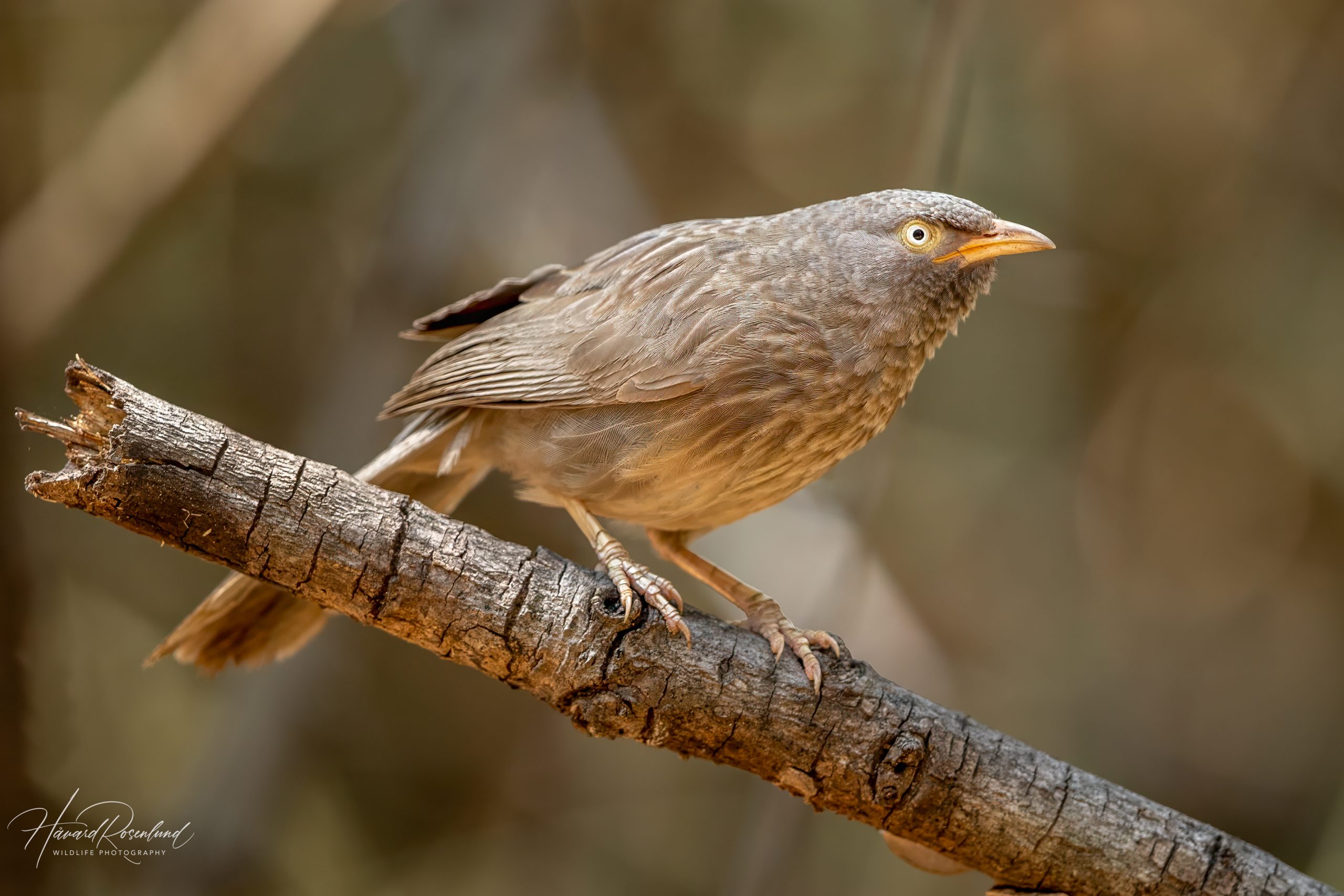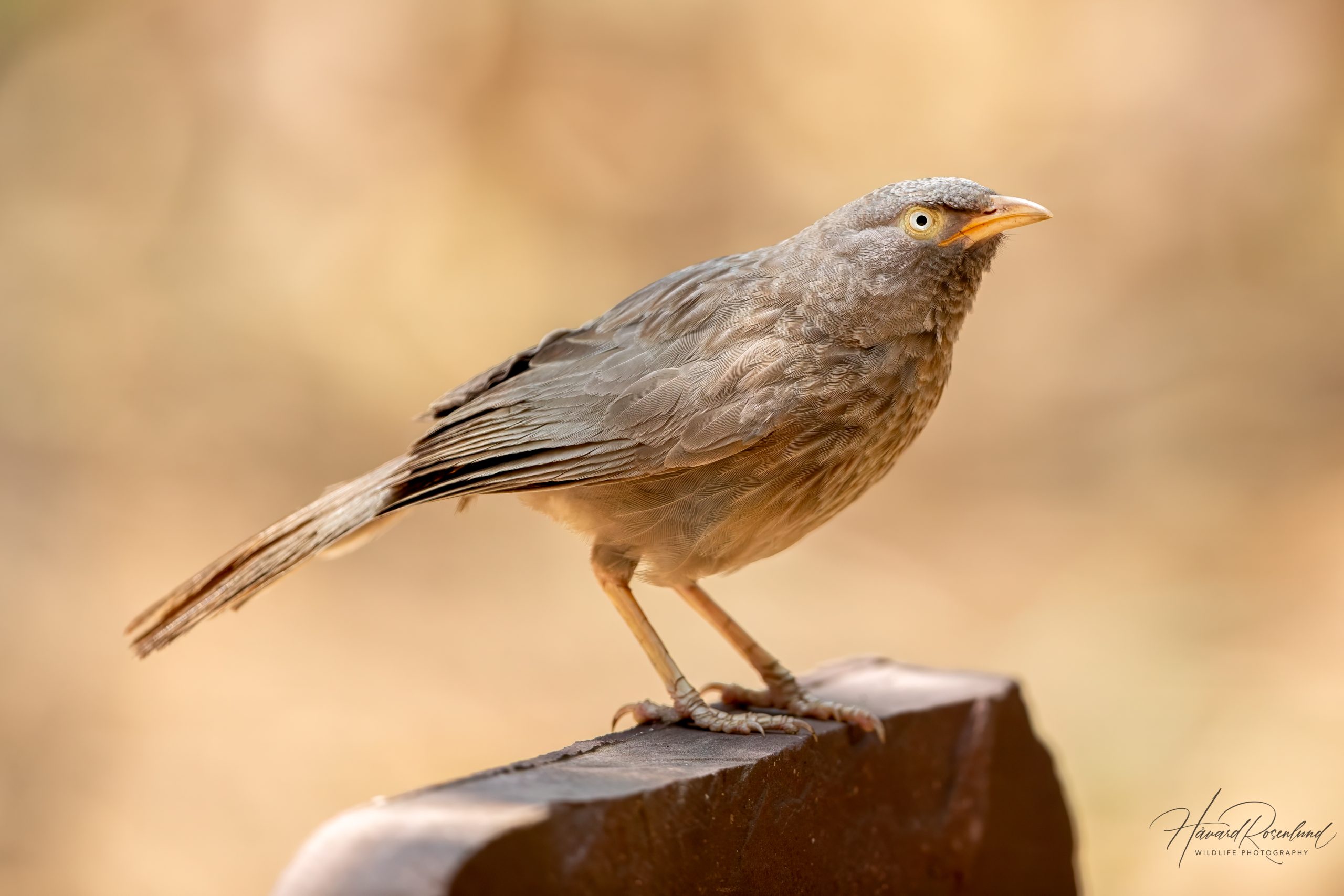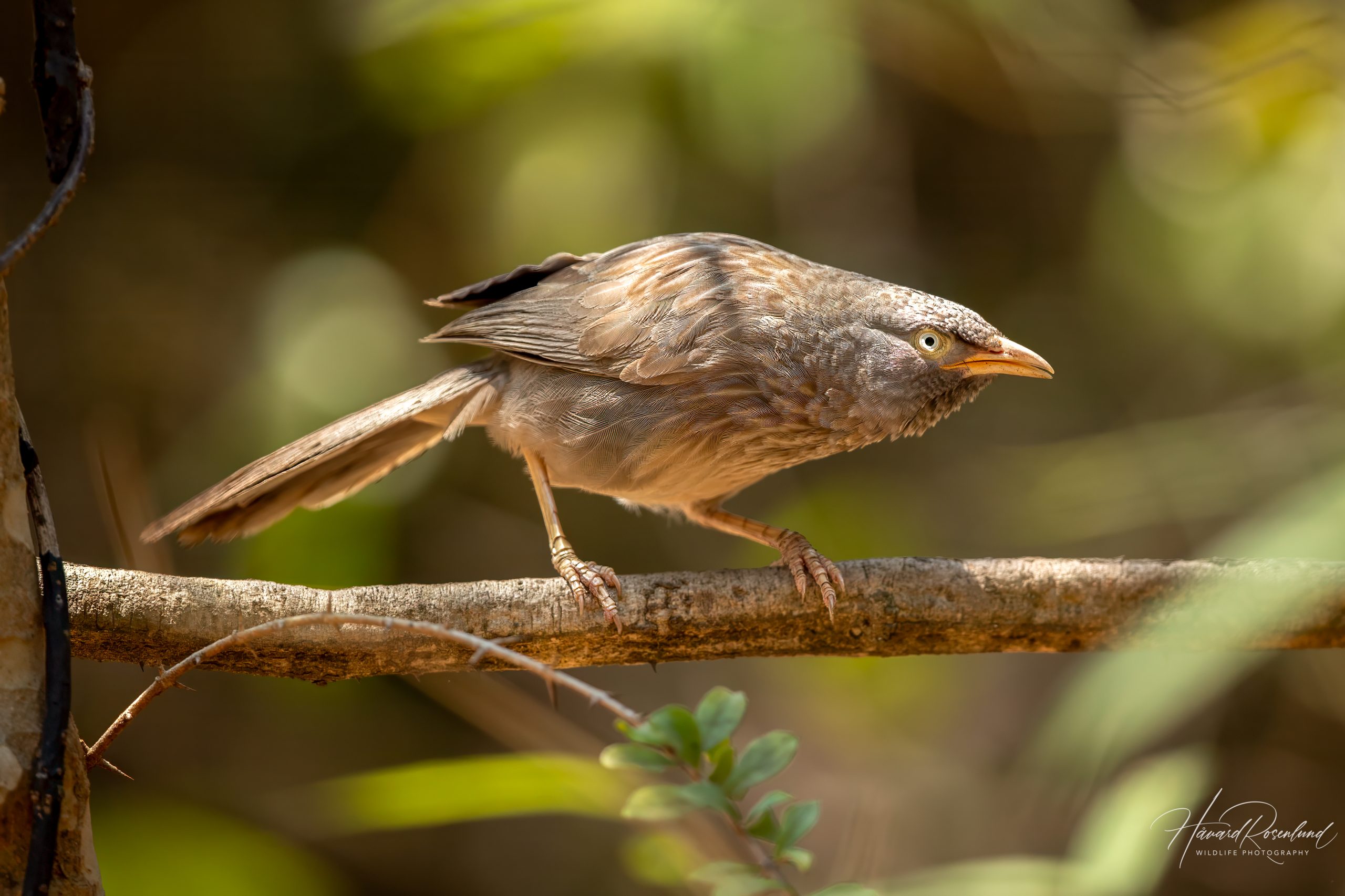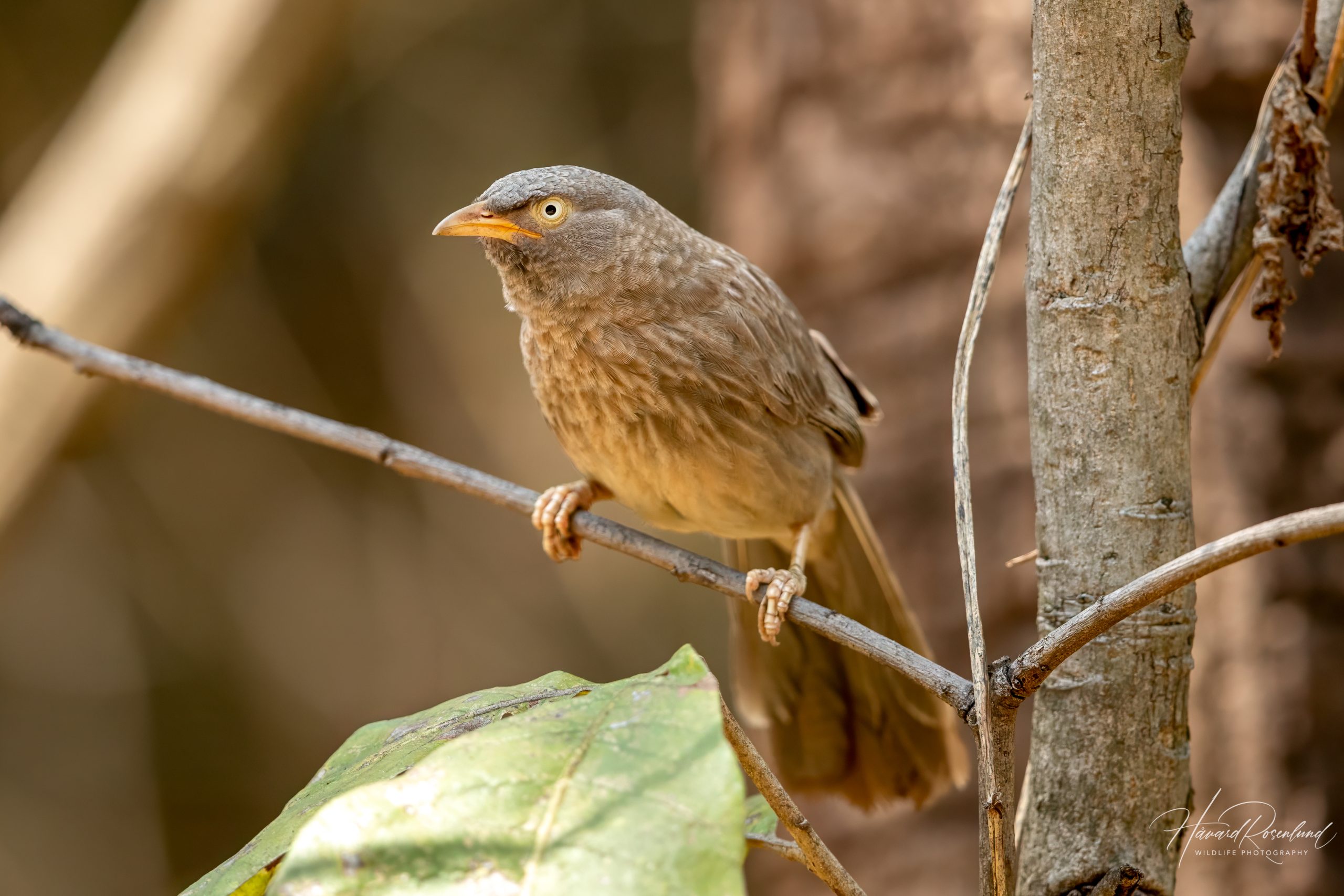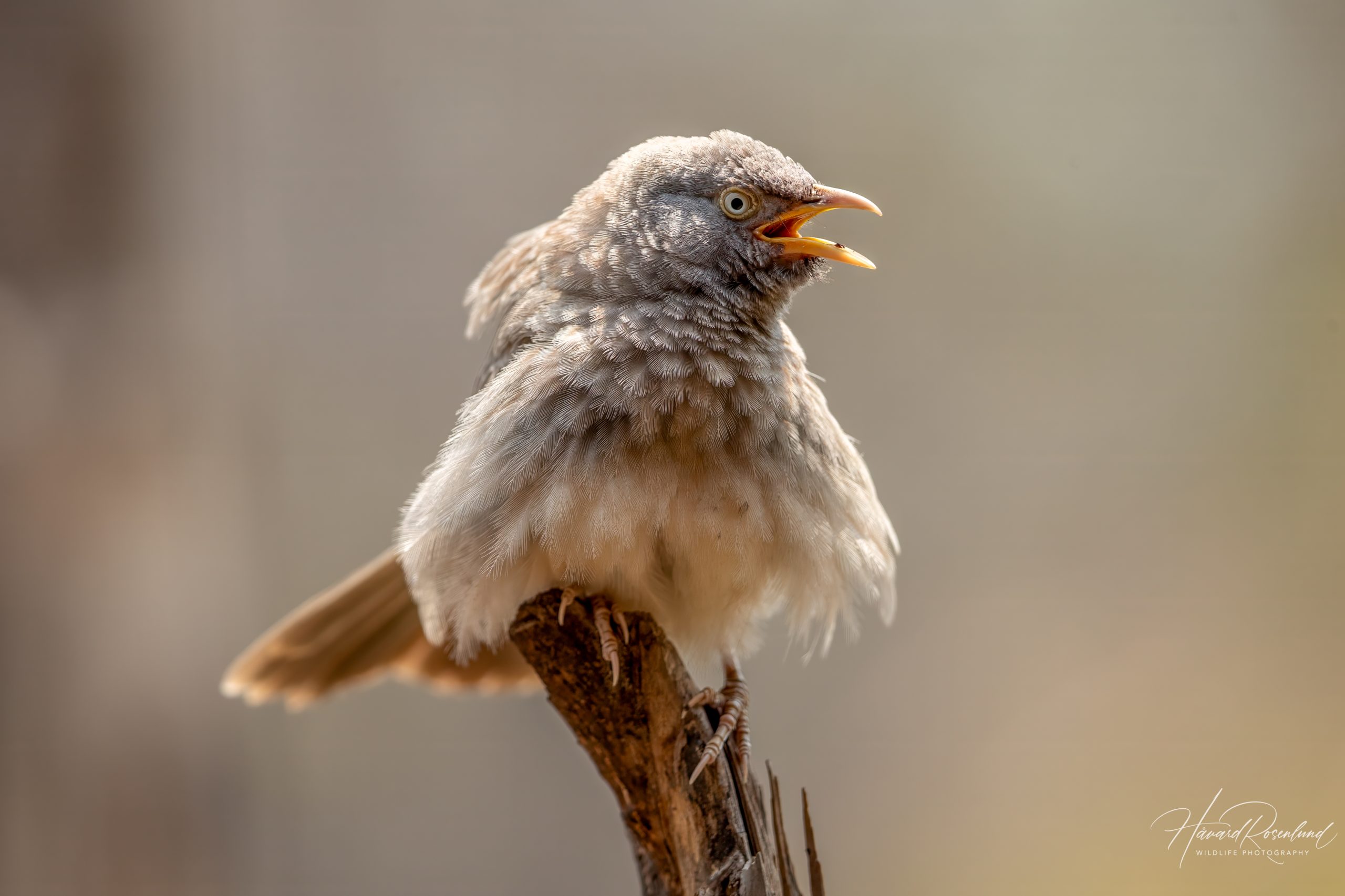Description
The jungle babbler (Argya striata) is a common passerine bird found primarily in the Indian subcontinent. It typically measures about 25 cm (10 in) in length and weighs between 50 to 80 grams (1.76-2.82 oz). The bird is characterized by its brownish-grey plumage, with a slightly paler underbelly and a softly streaked back and breast, which gives it a scruffy appearance. It has a white eye and the bill is yellow. It is similar to the yellow-billed babbler (Argya affinis), which has a distinct pale head. The jungle babbler was previously considered conspecific with the orange-billed babbler (Argya rufescens), a species found in Sri Lanka, but differences in plumage, bill coloration, and vocalization led to a taxonomic split.
Diet & habitat
Jungle babblers inhabit a wide range of habitats, from open woodlands and scrublands to urban gardens and agricultural fields. They are particularly common in areas with dense shrubbery, which they use for cover and foraging. These birds have an omnivorous diet, primarily feeding on insects, fruits, and seeds. They forage on the ground and in low vegetation, often moving in noisy, cooperative groups. Their feeding behavior involves hopping and pecking at the ground, turning over leaves, and probing the soil with their bills to uncover hidden prey.
Behavior
Jungle babblers are highly social birds, often seen in groups of six or more individuals, which has earned them the nickname “Seven Sisters” in some regions. They communicate with a variety of calls, ranging from harsh chattering to softer whistles, and use these vocalizations to maintain group cohesion and coordinate movements while foraging. These birds are known for their cooperative behavior, particularly in alarm calling and mobbing predators. When threatened, the group comes together to drive away intruders, displaying remarkable teamwork.
Nesting
The breeding season of the jungle babbler varies across its range but generally falls between March and September. The birds build loose, cup-shaped nests in bushes or low trees, constructed from twigs, grass, and leaves. The female typically lays 3 to 5 eggs, which are pale blue with reddish-brown spots. Both parents participate in incubation, which lasts around 14 to 16 days. After hatching, the chicks are altricial, meaning they are born blind and helpless, requiring extensive parental care. The fledging period is about 15 to 18 days, during which the chicks are fed by both parents and occasionally by other group members, a behavior known as cooperative breeding.
Status
The jungle babbler is classified as least concern on the IUCN Red List due to its wide distribution and stable population. However, habitat loss due to urbanization and agricultural expansion poses potential threats to local populations. These birds are adaptable, but the reduction of natural habitats could impact their numbers in the long term.




